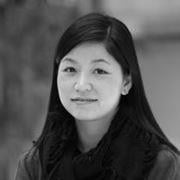 Jerman Cheung
East Asia Press Office,Hong Kong
Jerman Cheung
East Asia Press Office,Hong Kong
The Construction Industry Council (CIC)’s Zero Carbon Building (ZCB), engineered by Arup as the first of its kind in Hong Kong, was opened yesterday.
ZCB was designed by Ronald Lu & Partners (HK) Ltd, while Arup provided green building design and multidisciplinary engineering services to this pioneering project to showcase state-of-the-art zero carbon building technologies and raise community awareness of sustainable living in Hong Kong.
The building is a remarkable addition to Arup’s long track record of sustainable building design, following on from the successful delivery of Beddington Zero Carbon Development (BedZED) in the UK, the California Academy of Sciences in the US, and Samsung GREEN TOMORROW in Korea.
“The project represents a new milestone for green building development in Hong Kong. It will encourage the adoption of green and low carbon elements in construction.
- Mr John Tsang Chun-wah, Financial Secretary of HKSAR Government
The building goes beyond the traditional definition of zero carbon. It is connected to the local grid and produces renewable energy on site, from a combination of photovoltaic panels and a biodiesel tri-generation system, to offset the power consumed on an annual basis. The excess will be exported to the local grid to cover the embodied energy of its construction process and building materials.
The large-scale use of biodiesel as a renewable tri-generation fuel is also a first in Hong Kong. The system will use waste cooking oil to generate power, solving two problems – waste treatment and energy generation – in one go.
“ZCB is a pioneer and inspiring project, not only for the construction industry, but for Hong Kong in general. He opined that the project would become a model and inspire more and more zero or low carbon buildings in Hong Kong.
- Mr Lee Shing-see, CIC Chairman
Overall, the building has been fitted out with more than 90 cutting-edge environmental features, which will allow local and international researchers to explore and understand future design practice.
“To achieve carbon neutrality, an integrated approach has been adopted. Apart from the advanced technologies, we have also made every effort to minimise material use and embodied energy through efficient structural design and low carbon construction practices.
- Dr Raymond Yau, Arup Director
The project creates a new kind of environment that integrates work, education and social well-being. The 3-storey building comprises an indoor exhibition and education space, a showcase eco-home, eco-offices and a multipurpose hall; and the open space is the first native urban woodland in Hong Kong.